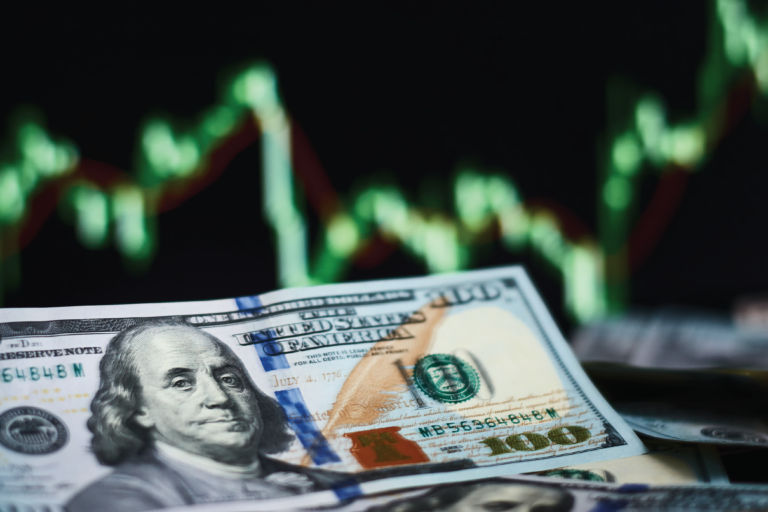The Federal Reserve: An Overview of the World’s Most Powerful Financial Institution
Nearly every country in the world has a central bank that plays an important role in guiding the nation’s economy. The actions of several of these, including the European Central Bank (ECB), the Bank of England (BOE), the People’s Bank of China (PBOC), and the Bank of Japan (BOJ) have an impact beyond their nation’s borders. However, none of these entities have an impact anywhere near that of the U.S. Federal Reserve, which is far and away the most important financial institution in the global economy. And as such, the Federal Reserve also plays an outsized role in the movement of financial markets.
The Federal Reserve System, colloquially known as ‘The Fed,’ is an independent, centralized banking system that controls the nation’s monetary policy and regulation. It serves as the backbone of the American economy, and its decisions have a significant impact on the world’s economic stability and growth. Its history goes back more than a century; the Federal Reserve System came into existence in response to the financial panic of 1907 when banks across the country failed and the country realized the need for a central banking system. Today, the Federal Reserve System’s primary objective is to maintain economic and financial stability, control inflation, and promote maximum employment.
History of the Federal Reserve System
The Federal Reserve System was created on December 23, 1913, with the signing of the Federal Reserve Act. The Federal Reserve Act created a new type of financial institution in the U.S. – a central bank. The Federal Reserve was initially set up as a decentralized system that included 12 regional banks across the country. Each of these banks acted as a sort of mini central bank with a Federal Reserve Board responsible for overseeing the entire system.
But during the Great Depression, the role of the Federal Reserve changed significantly. It was given the task of stabilizing the economy and preventing further financial crises. In response to severe economic conditions at the time, the Federal Reserve started buying government bonds as a way to inject money into the economy. This had the effect of lowering interest rates and stimulating economic activity.
After World War II, the Federal Reserve shifted its focus towards inflation. It aimed to keep inflation in check by using monetary policy tools such as setting interest rates. The 1970s were particularly challenging, with the country experiencing high inflation rates due to factors such as the oil crisis and wage-price controls. The Federal Reserve, led at the time by Paul Volker, raised interest rates significantly. This helped reduce inflation but also contributed to a deep recession.
Today, the Federal Reserve plays a vital role in the country’s economic landscape. It is responsible for carrying out monetary policy, supervising banks, and providing financial services to the government. The central bank has a variety of tools it can use to influence the country’s economic performance, including open market operations and interest rate changes. Since the 2008 financial crisis, the Federal Reserve has also increasingly used additional measures such as quantitative easing and quantitative tightening to control interest rates and guide the economy.
Structure of the Federal Reserve System
The Fed is comprised of three main entities: the 12 Federal Reserve Banks, the Board of Governors, and the Federal Open Market Committee (FOMC.) The 12 Federal Reserve Banks are located throughout the country and act as the operating arms of the Fed, carrying out its policies and providing banking services to financial institutions. These regional entities also provide “on the ground” assessments of local economic conditions.
Each of the 12 regional Reserve banks is responsible for specific geographic regions of the US. The regional bank locations are:
| Boston | New York | Philadelphia | Cleveland |
| Richmond | Atlanta | Chicago | St. Louis |
| Kansas City | Minneapolis | Dallas | San Francisco |
The Board of Governors, located in Washington D.C., is the primary governing body of the Fed and consists of seven members. The members of the Board of Governors are appointed by the President of the United States and confirmed by the Senate, each serving a 14-year term.
The FOMC is responsible for setting the nation’s monetary policy and consists of the seven Board of Governors members and the presidents of 5 of the 12 Federal Reserve Banks. The president of the Federal Reserve Bank of New York is always one of the five, while the other 4 slots are filled on a rotating basis from among the 11 remaining Regional Bank presidents.
Role of the Federal Reserve System
The Federal Reserve has three primary functions. The first is to regulate the money supply, which it does through monetary policy. The Fed’s monetary policy tools include setting interest rates, regulating banks’ reserve requirements, and purchasing and selling government securities. For example, if the Fed wishes to increase the money supply, it may lower interest rates, which stimulates borrowing and spending. Conversely, if the Fed wants to decrease the money supply, it may raise interest rates, which encourages savings and reduces borrowing and spending.
The Fed’s other primary function is to regulate and supervise financial institutions, including banks, credit unions, and other financial service providers. It oversees these institutions to ensure they are operating in a safe and sound manner and following regulations.
Finally, the Fed also acts as a lender of last resort, providing loans to financial institutions to prevent bank runs and other financial crises.
Let’s look at each of those areas in more detail, starting with how the Fed controls the money supply.
Controlling the Money Supply
There are multiple tools the Fed uses to control the money supply, including:
Reserve Requirements: One of the ways the Fed influences the money supply is by setting reserve requirements for banks. Reserve requirements refer to the amount of money that banks must keep in reserve either with the Fed or in their own vaults. By increasing the reserve requirements, the Fed can limit the amount of money that banks can lend out, thereby reducing the amount of money in circulation. Conversely, by decreasing the reserve requirements, the Fed can encourage more lending and boost the money supply.
Federal Funds Rate: Due to ebbs and flows in their business, banks migth find themselves with funds in excess of the reserve requirement. Conversely, they might face a temporary shortfall. In these situations, banks lend to and from each other. The rate they do so at is guided by the Federal Funds Rate, which is set by the FOMC. Changes in the Federal Funds Rate have significant impacts on the broader economy and are thus monitored very closely by financial market participants.
Open Market Operations: Another tool that the Fed uses to control the money supply is open market operations. This involves buying and selling government securities such as Treasury bills, notes, and bonds. When the Fed buys these securities, it injects money into the economy and increases the money supply. When it sells these securities, it withdraws money from the economy and reduces the money supply. This tool is particularly effective in influencing short-term interest rates.
Discount Rate: The discount rate is the interest rate at which commercial banks can borrow money from the Fed’s discount window. By changing the discount rate, the Fed can encourage or discourage borrowing and thereby influence the money supply. Lowering the discount rate makes it cheaper for banks to borrow from the Fed, which can stimulate lending and increase the money supply. Raising the discount rate has the opposite effect, discouraging borrowing and reducing the money supply. However, borrowing directly from the Fed can be seen as a sign of weakness for financial institutions, so they are sometimes hesitant to do so. As such, changes in the Discount Rate tend to have less of an impact on the economy than changes in the Federal Funds Rate.
Moral Suasion: In addition to these technical tools, the Fed can also use moral suasion to influence the money supply. Moral suasion refers to the informal communication and persuasion techniques that the Fed uses to influence the behavior of banks and financial institutions. For example, the Fed can use public speeches or informal conversations to encourage banks to lend more or less. While moral suasion is not a formal tool and has no legal authority, it is still an effective way for the Fed to influence the behavior of banks and financial institutions.
Forward Guidance: Finally, the Fed has recently started using a tool called forward guidance to influence the money supply. Forward guidance involves making public statements about the future course of monetary policy. By providing guidance about future interest rates or the direction of the money supply, the Fed can influence the behavior of financial markets and decision-makers. This can help the Fed achieve its goals without necessarily having to change interest rates or reserve requirements.
Regulating Financial Institutions
The Fed’s second primary function involves the regulation of financial institutions, a role the Fed shares with several other government entities.
Supervision: The Federal Reserve supervises and regulates banks of all sizes, including national and state-chartered banks, as well as international banking institutions. These banks are regularly examined to ensure that they are following the rules and regulations that the Fed sets out to prevent risky behavior. Supervision can include everything from reviewing a bank’s financial statements and risk management practices to making sure that it has appropriate internal controls and governance in place. The Fed also ensures that banks are following responsible lending practices, maintaining adequate capital, and managing risk appropriately.
Regulation: The Federal Reserve also guides financial institutions through the creation and implementation of regulations. These regulations can involve everything from ensuring that banks have adequate liquidity to preventing unfair and deceptive practices in lending. One of the most significant pieces of legislation in modern banking is the Dodd-Frank Act, which was passed in 2010 in response to the financial crisis of 2008. This act significantly increased the Fed’s regulatory powers and led to a number of new rules and regulations to ensure the safety and soundness of the banking system.
Enforcement: When financial institutions fail to meet the standards set by the Federal Reserve, the Fed has the power to take enforcement actions. These actions can include everything from requiring the bank to increase its capital to restricting its activities or, in extreme cases, shutting it down entirely.
Collaboration: The Federal Reserve also works closely with other regulatory bodies, including the FDIC, the OCC, and the SEC, to ensure that the financial system is operating as it should be. By collaborating on issues like cybersecurity and data privacy, these organizations can work together to prevent threats to the financial system from outside forces.
Lender of Last Resort
The final role of the Federal Reserve and other central banks is to act as a lender of last resort. Writing in 1873, Walter Bagehot in his book Lombard Street said that “to avert panic, central banks should lend early and freely, to solvent firms, against good collateral, and at ‘high rates.’”
Basically, that means that in times of crisis, the Fed steps in and provides loans (or other forms of liquidity) when no one else can or will. Recent examples of this include the 2020 COVID crisis, the Great Financial Crisis of 2008-2009, and the Fed’s efforts to orchestrate a bailout of the failed hedge fund Long Term Capital Management in 1998.
While the Fed is called upon to play this role less frequently than its other jobs, one could perhaps argue that acting as the lender of last resort is the central bank’s most crucial function. After all, while it is impossible to prove a counter factual and determine exactly what may have happened in the absence of the Fed’s support, acting as a buffer between financial crisis and financial collapse is inarguably important.
The Bottom Line
The bottom line is that while often criticized, the Federal Reserve is an essential part of the US and global financial systems, responsible for maintaining economic stability and regulating financial institutions. Its decentralized structure ensures regional representation while maintaining oversight and accountability at the national level. By understanding the Federal Reserve and its role in regulating the money supply, supervising banks, and acting as a lender of last resort, we can gain a better understanding of how our financial system works, as well as how the Fed impacts financial markets and our daily lives.










